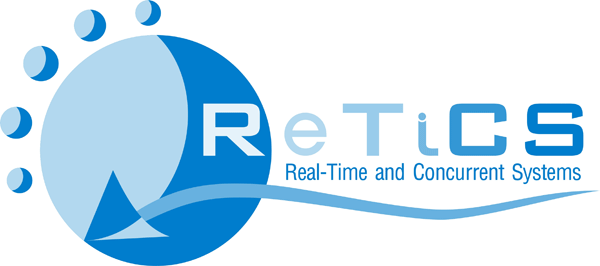RESEARCH
Research directions

The ReTiCS group (Real Time and Concurrent Systems) is supported by the Department of Computing Systems from the University of Castilla-La Mancha and the Albacete Research Institute of Informatics, both holding their premises in the Albacete Campus. Research in the group has been developed four big areas of interest, with the support of different projects granted with public (regional to european) and private funds:
1.Formal models of concurrency
This has been our main area of research. The main topics which we are studying are the following:
- Semantics and formal models of concurrency.
- Petri nets (timed and probabilistic extensions).
- Process algebra (extensions including again time and probabilities).
- Formal models for the description of Real-Time systems.
- Performance analysis.
We have applied these techniches to a great variety of sytems including web services, publish/subscribe protocols, complex event processing, sensor protocols and biology systems.
2.Applications of numerical computing to pantograph/catenary interaction
This is an applied research area. The group members apply numerical computing techniques to resolve some concrete problems. The main problem the group has tackled is the improvement railway catenaries, to obtain better railway speeds. As illustration, some numerical interesting problems related to this field of research are the following:
- Calculus of length of suspension cable
- Study of pantograph/catenary system
- Study of stiffness of a span
3.Grid computing
Recently we have incorporated this new area of research. The main topics concerning with this area are the following :
- Definition of web services and portals.
- Development of software to be executed on a grid platform
4.Supercomputing
This research area address the optimization of different kind of applications (climate change, meteorology, bioinformatics, engineering, etc) by using shared and distributed memory platforms. The main goal is to take advantage of the underlying architecture in order to improve the performance of current applications.
Also, some Works by using graphics accelerators (GPUs) or Intel Xeon Phi have been carried out in the context of this area.
In addition, a consultancy service about the feasability of parallelization of an application is done by the group, generating a report of how this task can be addressed given an application.